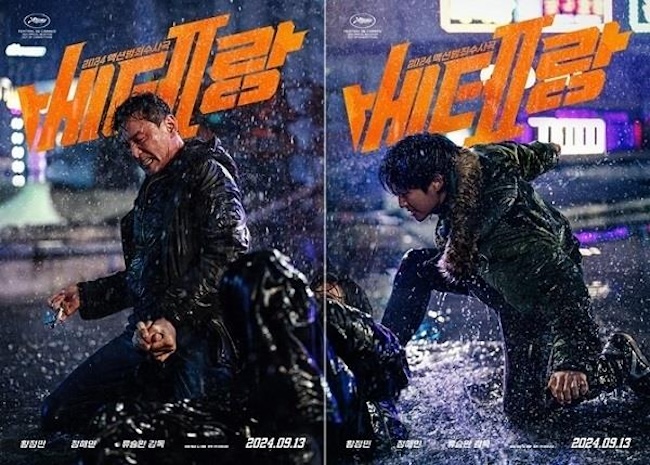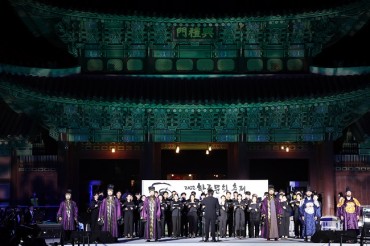
Posters of “I, the Executioner” are seen in this photo compilation provided by CJ ENM. (Image courtesy of Yonhap)
SEOUL, Sept. 12 (Korea Bizwire) — Viewed on its own merit, “I, the Executioner” works well as a standalone film, rather than a sequel to the 2015 crime-action hit “Veteran.” However, its predecessor set a standard that is hard to match.
Packed with adrenaline-pumping, edge-of-your-seat action that fans of director Ryoo Seung-wan, known for his reputation as an action master, eagerly anticipated, the film stays true to the essence of its predecessor, with Hwang Jung-min reprising his role as Seo Do-cheol, a relentless detective chasing down criminals.
While the original focused on a face-off between the detective and a corrupt conglomerate heir, this new installment moves away from a simple good-versus-evil narrative. Instead, it delves into deeper social themes, offering a more nuanced message that challenges viewers to reflect on concepts of justice and belief.
In the second installment, Seo’s team is assigned to a new case where each victim is killed in a way that mirrors their own brutal past crimes. He soon finds himself on the trail of an elusive vigilante, nicknamed “Hachi” by a public that praises these murders as acts of righteous justice.
But “there is no such thing as a good murder and a bad murder when it comes to killing people,” the detective Seo declares.
Desperate to catch what appears to be a serial killer, the team enlists rookie officer Park Sun-woo, portrayed by Jung Hae-in, who claimed to have admired Seo and was inspired by him to join the police force in the first place. Online, Park was widely known for his unique technique of capturing suspects by strangling them with his thighs, a skill that eventually exposes him as the killer.
The film reveals early on that the rookie officer is actually the antagonist. It then closely follows the tense confrontation and chase between Seo, who is dedicated to upholding justice, and Park, the youngest team member who clings to his own misguided beliefs.
Actor Jung, typically known for romantic roles and soft, tender image, proves his versatility by portraying a psychopathic killer. He also excels in delivering electrifying, pulse-racing action sequences. Jung’s portrayal of malevolence, however, lacks the spine-chilling impact of the ultimate evil depicted by Yoo Ah-in in the prequel.
The sequel introduces a new narrative involving detective Seo’s family, focusing on his teenage son who is a victim of school bullying. While this subplot adds a new layer of human depth to the protagonist’s character, it may, for some, risk diluting the film’s core storyline centered on the face-off between Seo and Kim, and potentially diverts attention from the central cat-and-mouse game that fans of the original might expect.
During the nine-year gap between the original movie and its sequel, audiences have been exposed to a wealth of high-quality action movies and TV series, such as the blockbuster “The Roundup” franchise. The vigilante justice theme has also become particularly prevalent, as seen in popular works like Disney+ “Vigilante” and Netflix’s “The Killer Paradox.” This saturation of the genre may pose a challenge for Ryoo’s latest film to stand out and offer a fresh take on familiar territory.
The post-credit scenes hint at a potential third installment. If this is indeed the plan, director Ryoo would be wise to act swiftly, as another nine-year gap could be detrimental to the franchise’s momentum and audience interest.
“I, the Executioner” is set to hit local theaters Friday.
(Yonhap)






